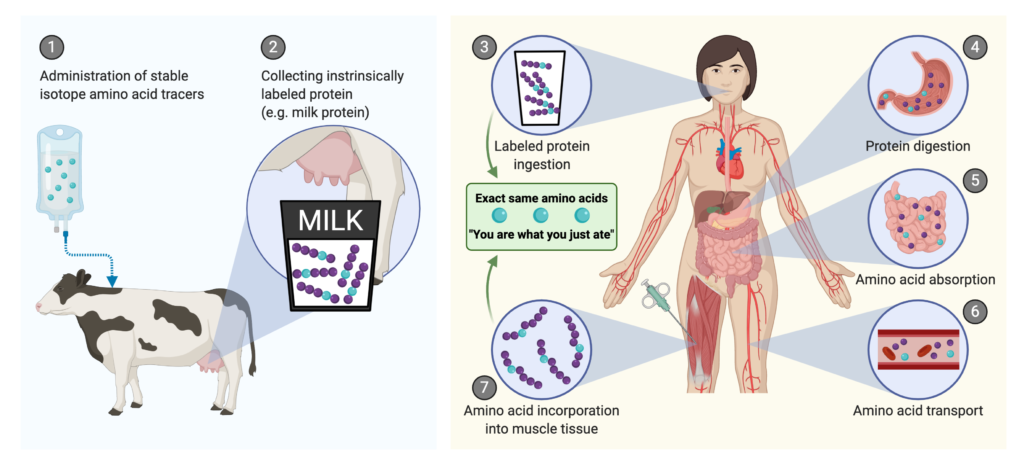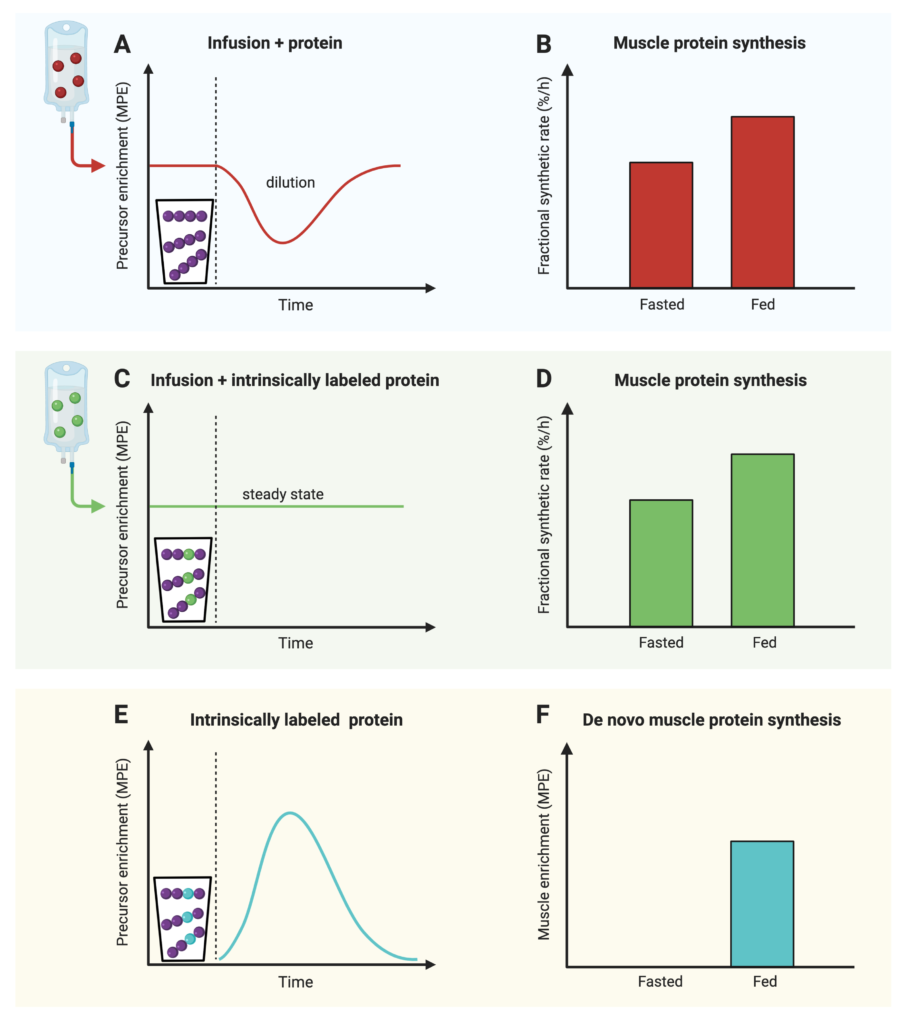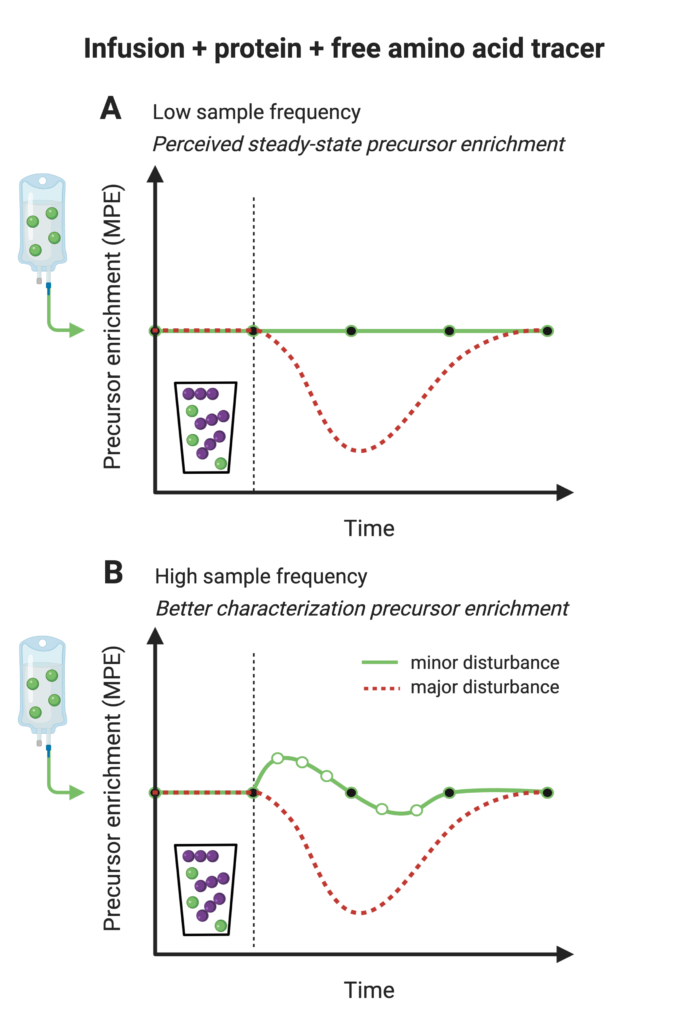Our new review:
Comprehensive assessment of post-prandial protein handling by the application of intrinsically labelled in vivo in humans.
There are many advantages of this method.
Building amino acid tracers into dietary protein allows assessment of protein digestion and absorption into the circulation. This is preferred over plasma amino acid concentrations that are just a proxy.
Assessing protein digestion and absorption is also an essential step in accurately assessing whole-body protein net balance (Trommelen, 2021; or the blog version here).
Protein synthesis can also be specifically measured in muscle tissue. This measurement requires that the enrichment of amino acid tracer used to calculate it is in a steady-state (simplified: the percentage of tracer vs the normal amino acid). However, normal protein only has unlabeled protein. Therefore, the ingestion of protein results in a drop of the amino acid tracer enrichments (called dilution; see panel A below).
Intrinsically labeled protein solves the issue. Because there are also amino acid tracers in the protein, the plasma amino acid enrichments is not disturbed (panel C). This will allow better assessment muscle protein synthesis rates.
In addition, a unique tracer in the dietary protein (so not in the infusion), allows the assessment of the amount of dietary protein that is build into muscle tissue (de novo muscle protein synthesis; panels E and F).
Instead of using intrinsically labeled protein, amino acid tracers can also be added to protein in an attempt to stabilize plasma amino acid enrichments (panel A below). However, because free amino acids are much more rapidly digested than dietary protein, the speed at which these amino acids appear into the circulation does not match the speed of the protein. While adding free amino acid is generally an improvement compared to doing nothing, it is suboptimal compared to the application of intrinsically labeled protein.
When there is no steady-state, it is also important to have a high sampling frequency to assess the disturbance. A low sample frequency can give the false impression there is a steady-state simply because you miss the peaks and nadirs.
In addition to an explanation of the methodology, the review also describes findings established with the intrinsically labeled protein method.
For example, it is clear that physical activity strongly impacts how much of ingested protein is built into muscle tissue. This is a spectrum, where doing nothing is the worst (e.g. prolonged bed rest) and intense resistance training is the best.
Much more details here in our OPEN-ACCESS full article:
Trommelen et al. Comprehensive assessment of postprandial protein handling by the application of intrinsically-labelled protein in vivo in human subjects. Proc Nutr Society, 2021





Leave a Reply